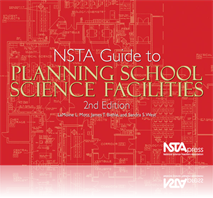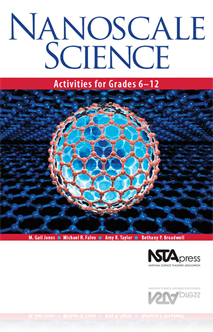All Resources
Book Chapter
In order for students to inquire confidently, we must create safe classroom environments. Safety is not just a set of rules but a state of mind, and perhaps, most importantly, it is an attitude and a set of skills that carry over into a students’ d...
Book Chapter
Designing Facilities for the Middle School (6-8)
A high-quality middle school science program requires science classrooms with safe, well-designed laboratory space, and school designers must consider the distance students will have to travel to these classes. Trying to balance high quality science ...
Book Chapter
Designing Facilities for the High School (9-12)
When we participate in a school building program, we create learning environments that will last for many decades. So a major principle of good science facilities planning is to avoid building for a single curricular model. Since continued change in ...
Book Chapter
While everyone in a school community should share responsibility for the “greening” of a school, it is often the science teachers who make the best use of these facilities, basing their lessons on the components of a green school that have been b...
Book Chapter
A periodic table on the ceiling of a chemistry lab/classroom, footprints and fossils of amphibians and animals in a courtyard sidewalk, a 60-foot slinky suspended from the ceiling, and a tessellation pattern in the floor tile extend science learning ...
Book Chapter
We say it often, and the phrase appears in the National Science Education Standards and many state and local documents as well. “All students should have opportunities in science.” But that vision is harder to achieve in practice. It is especiall...
Book Chapter
Imagine metal eyeglass frames that you can roll in a ball, only to watch it uncoil back to its original shape! How can an inanimate object, such as metal, do such a thing? There is a metal alloy that can do just that and it’s one of the many discov...
Book Chapter
Socks that don’t stink, graffiti-resistant paint, windows and sunscreen that reject UV rays… that’s nanotechnology. Students will learn about some of the latest inventions using nanotechnology by exploring actual products of nanotechnology rese...
Book Chapter
Nanotechnology has opened the door for medical applications that work at the molecular level to diagnose, treat, and prevent disease. This investigation models one approach to treating cancer that uses gold nanoshells to locate and destroy cancer. St...
Book Chapter
Building Small: Nano Inventions
Just as cells were discovered with early light microscopes and Saturn’s rings by the first telescopes, the nanoscale world has emerged due to new tools such as the Atomic Force Microscope (AFM). As a result of being able to build atom by atom a who...
Book Chapter
Too Little Privacy: Ethics of Nanotechnology
Advances in nanotechnology allow us to create unique and tiny labels for manufactured materials, create tiny sensors that can detect the presence of specific molecules, and make machines that are so small they can work invisibly. Through a series of ...
Book Chapter
Just how big is a billion? How tiny is a nanometer? Five hands-on inquiry activities are presented that use measurement and calculations to help students visualize one billion. Students develop mental anchors or references to use when conceptualizing...
Book Chapter
Promise or Peril: Nanotechnology and the Environment
Nanoscience research has made great strides in recent years in areas such as nanomaterials and drug delivery. This success has kindled hope for exciting technological breakthroughs in the near future in areas ranging from new cures for cancer therapi...
Book Chapter
How do you get students to understand a number as small as one-billionth? Through a hands-on dilution activity using food coloring, students will learn about parts per billion. A matching card game helps students further understand one-billionth by g...
Book Chapter
Advances in nanotechnology are due in part to the unique structure and properties of carbon nanotubes and buckyballs. These unusual structures are being studied for their potential use as vehicles for drug delivery, to strengthen materials, and as mi...




